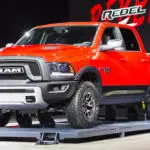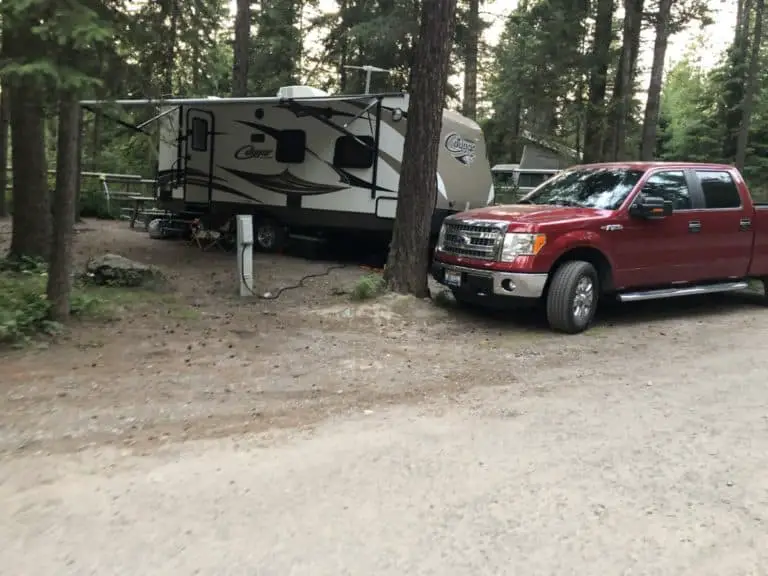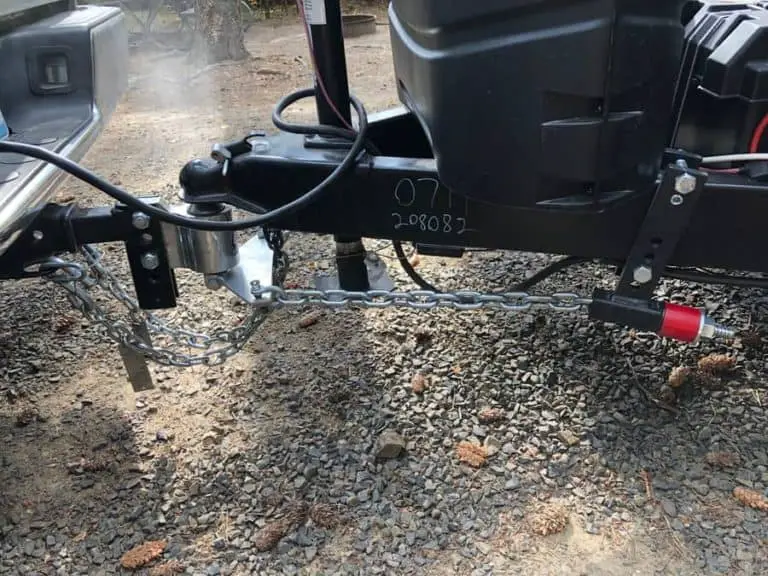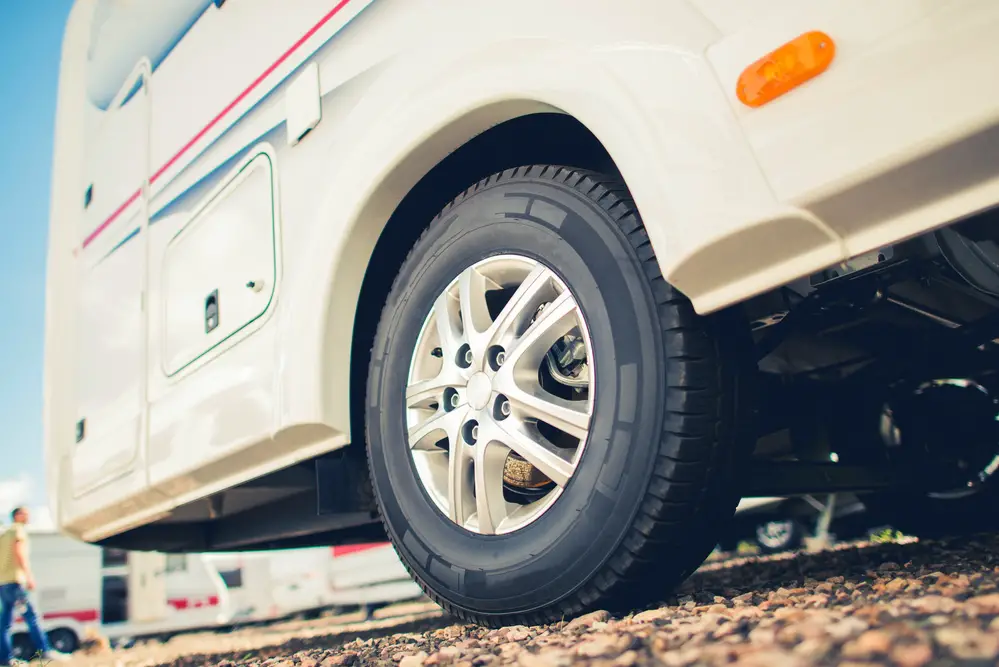Can You Back Up With a Weight Distribution Hitch Connected?
If you’re new to the world of towing trailers or campers, it’s a surprisingly confusing one. There are many different factors to consider if you’re trying to set your vehicle up for towing purposes. Weight distribution hitches, for example, are quickly becoming the hitch of choice for heavy towing, but there are questions surrounding this type of hitch that make it less than desirable.
Most weight distribution hitches allow backing up in straight lines or making slight turns. Some hitches have no backing restrictions, while most require you to loosen or remove the spring bars and sway control system when making turns while in reverse.
In general, you should always check the specifications of your particular hitch before attempting any backing maneuvers. A big factor determining whether or not you can back up with a weight distribution hitch is the type of hitch you have. In this article, we’ll review some of the different rules for different weight distribution hitches and help you become more prepared for future towing.
What is a Weight Distribution Hitch?
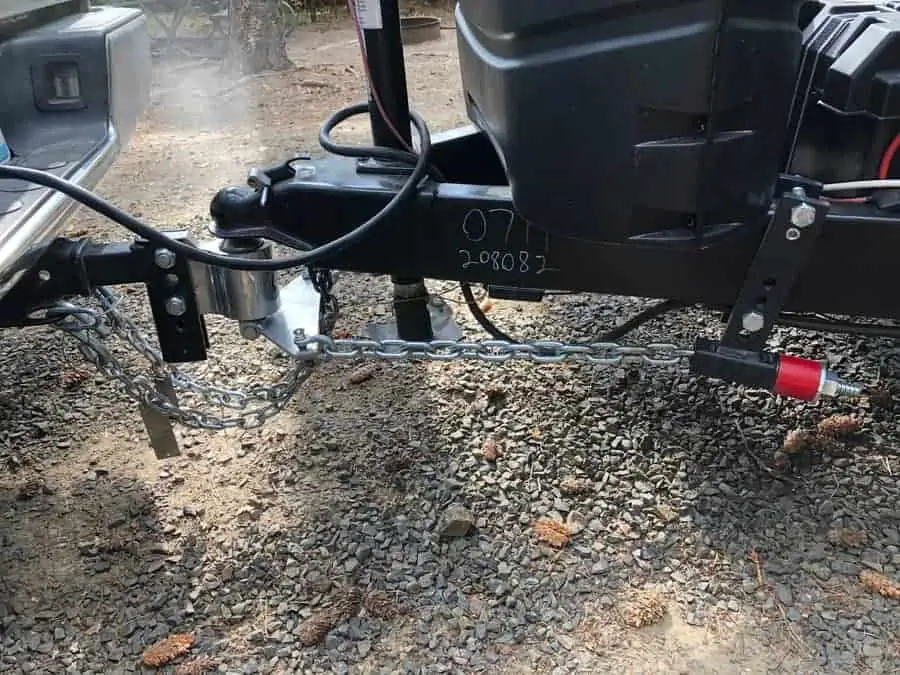
A weight distribution hitch is exactly what it sounds like. It’s a hitch designed to better distribute the weight from the tongue of the trailer or camper you’re towing. It takes a bulk of the weight directly off the bumper of your towing vehicle and distributes it across the front and rear axles. This makes for a smoother towing experience and reduces the amount of stress on your towing vehicle.
A weight distribution hitch makes the connection between the trailer and towing vehicle more level. Rather than having the back of your vehicle buckle and dip under the added weight of the trailer tongue, the weight distribution hitch will keep it level.
Weight distribution hitches usually have bars or chains and use friction to slow down the sway of trailers using friction. This can work at speeds as usually you are not turning very sharp, but when you are backing up, you most likely are making tight turns which can bind your weight distribution hitch and not allow you to remove it.
Can You Back Up When You Have a Weight Distribution Hitch?
Because of how weight distribution hitches are designed and attached to your towing vehicle, they don’t always allow for driving in reverse. Generally, it all comes down to the type of hitch and what the manufacturer specifies about backing up with their weight distribution hitch connected.
Most newer weight distribution hitches allow for backing up and maneuvering. However, you must know what type of hitch you have before attempting to back up because you could damage your hitch, towing vehicle, or trailer.
The Equal-i-zer weight distribution hitch system, for example, allows for full backing up and maneuverability. The system is designed with sway bars and springs that can handle the pivoting action of tight turns in reverse.
However, many weight distribution hitches, such as the Curt Weight Distribution System, don’t have full backing up capabilities. To do anything outside of backing up in a straight or relatively straight line, you’ll have to disconnect the sway bars and friction control system. Attempting to turn at sharp angles and jackknife your truck and trailer won’t be possible with these systems.
Does My Weight Distribution Hitch Allow for Backing Up?
If you currently have a weight distribution hitch installed on your truck or SUV but aren’t sure what its capabilities are, you should check before attempting to back up.
The best way to do this is to find your particular hitch’s brand and model number and look it up online. The manufacturer of your hitch should know whether your model allows for full, partial, or no backing up.
Now when we say you can’t back up, this doesn’t mean you can’t back up at all, it just means you can’t perform sharp turns when in reverse.
How to Safely Back Up With a Weight Distribution Hitch Connected
If your weight distribution hitch has no limitations to backing up, you’re free to drive and maneuver in any way necessary. If your weight distribution hitch has restrictions and limitations to its backing abilities, you’ll first have to disconnect the spring or sway bars and the friction control system. Here’s what you’ll have to do.
- With the ball of the hitch still connected to the trailer, raise the tongue of the trailer to remove tension from on top of the hitch.
- Use your break bar to loosen the saddle of the sway bar where it attaches to the trailer or camper.
- Use the bar to maintain tension as you loosen the bar from the trailer, as it could spring loose and hit something below it.
- Remove the locking mechanism holding the sway bar in place on the trailer.
- Slowly lower the saddle and remove the chain connecting the bar to the trailer.
- Move the bar sideways away from the trailer until it releases from the towing vehicle.
- Repeat these steps on the opposite side so that both bars are loose from the weight distribution hitch.
As you can see, backing up with a restricted weight distribution hitch is more of a hassle than with unrestricted hitches. However, as long as you follow proper procedures for your specific hitch, you can drive your vehicle and trailer in reverse with little issue.
If you don’t want to have to perform all of these steps to back up, we use the Andersen No Sway Hitch and it allows us to back up and fully drive without removing anything from the hitch.
What are the Benefits of a Weight Distribution Hitch?
With all the work and restrictions associated with weight distribution hitches, are they worth the hassle? Here are some top reasons people opt for weight distribution hitches rather than traditional ones.
- It reduces strain and stress on the rear axles of your towing vehicle by distributing weight evenly on all axles
- It ensures that the front axles of your towing vehicle won’t lift off the ground.
- It ensures you’ll have enough braking power to stop your vehicle when necessary.
- It makes for a smoother, more level towing experience
- You’ll have more peace of mind as you’re hauling something down the road
Do I Need a Weight Distribution Hitch?
There’s no question that using a weight distribution hitch can make for a smoother, more enjoyable towing experience. However, weight distribution hitches are costly, take time to install, and aren’t one size fits all. These obstacles have people looking for ways around installing a weight distribution hitch on their towing vehicle.
In general, it’s recommended that if you’re towing anything heavier than 5,000 pounds, you should have a weight distribution hitch. It’s also recommended that you have one of these hitches if your trailer weight is more than one-half of your vehicle’s weight.
Regardless of what you think or what the internet says, however, the best thing you can do is check your owner’s manual for advice. It should specify when you need to add a weight distribution hitch to your towing vehicle based on its weight and the weight of whatever you’re towing.
When buying, make sure you purchase a model with sway control as that is just as important as weight distribution. Once again, our favorite model is the Andersen.
Safe travels!
Be the first to be notified about FREE tips, hints, coupon codes, and email-exclusive information. All for FREE!






